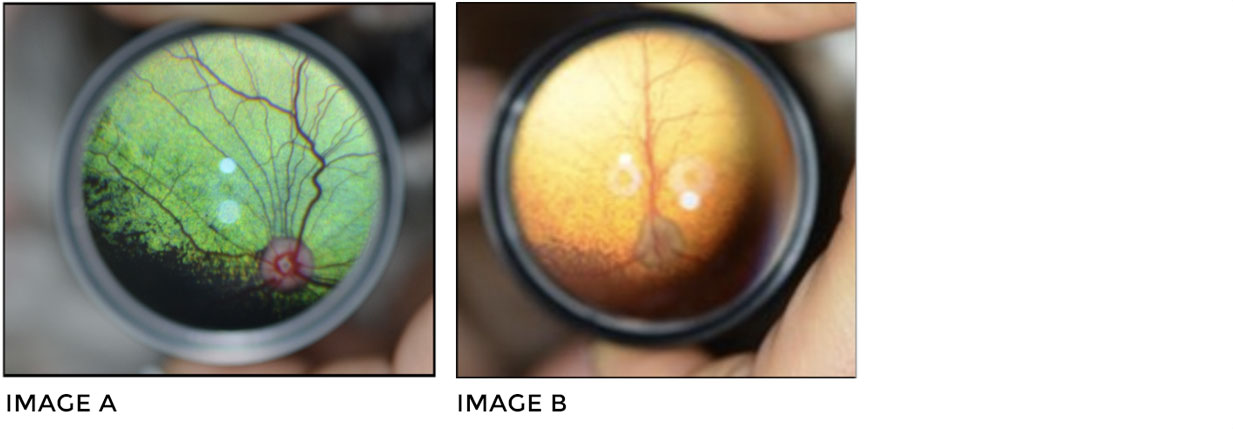Inherited Eye Disease and OFA Certification
By Rachel Mathes, DVM, MS, DACVO
Inherited ocular disease in purebred dogs is an important cause of potentially preventable ocular conditions. These conditions range from irritating (e.g. distichia, lacrimal micropuncta) to vision-threatening (e.g. PRA, micropapilla, cataracts). This is a large group of ocular diseases that are typically characterized by autosomal recessive genetic transmission. They are often marked by a clinical onset later in life. These characteristics make prevention through selective breeding and early detection difficult. In addition, many of these genetic traits are so common in the purebred dog population that complete omission of carrier dogs in the breeding pool would significantly narrow the gene pool for particular breeds and would not be warranted or reasonable due to possible selection for other abnormal traits. Recently, a change was made to the ophthalmic certifying agency supported by the American College of Veterinary Ophthalmologists (ACVO). While the Canine Eye Registry Foundation (CERF) still exists, the ACVO has partnered with the Orthopedic Foundation for Animals (OFA) to provide a centralized database of eye examinations performed by board-certified veterinary ophthalmologists on dogs in the United States.
Breeders are encouraged to have any canine purebred breeding pair certified with the OFA Eye Database. Eye examinations are performed by a Diplomate of the American College of Veterinary Ophthalmologists and information from the eye examination is submitted to the OFA. The OFA recommends submission of the eye examination forms even if the dog is not “clear” of inherited ocular disease. Submission into the database is complimentary for any dog with a “failing” grade (ocular condition known to be inherited in which breeding is not recommended). A nominal fee applies to certify dogs deemed free of clinical inherited ocular disease or dogs in which a diagnosis is made in which a designation of “breeder option” has been given. An example of this would include Cavalier King Charles Spaniels examined and noted to have distichiasis. Because this trait is common in the breed and does not typically cause clinical ophthalmic pathology, the breeder has the option to breed the dog, even though it is affected with a known inherited ocular trait. While it cannot be determined if a “normal” dog is a carrier for a specific trait based on ophthalmic examination, information on affected and unaffected dogs is valuable for many reasons. Ongoing genetic research and data collection are vital for prevention of vision-threatening inherited ocular conditions, such as PRA (progressive retinal atrophy) (see Figure A and B). Portland Veterinary Specialists offers OFA Eye Canine Registry examinations for all purebred dogs.
 A normal indirect fundic photograph is depicted (A). Note the 15-20 prominent arterioles emerging from the optic disc with three main retinal venules (larger and more tortuous than the arterioles). The vessels extend to the fundic periphery. A patient with PRA is depicted (B). There is vascular attenuation manifested by loss of visible arterioles and lack of vascular extension to the fundic periphery. There is also generalized tapetal hyperreflectivity.
A normal indirect fundic photograph is depicted (A). Note the 15-20 prominent arterioles emerging from the optic disc with three main retinal venules (larger and more tortuous than the arterioles). The vessels extend to the fundic periphery. A patient with PRA is depicted (B). There is vascular attenuation manifested by loss of visible arterioles and lack of vascular extension to the fundic periphery. There is also generalized tapetal hyperreflectivity.